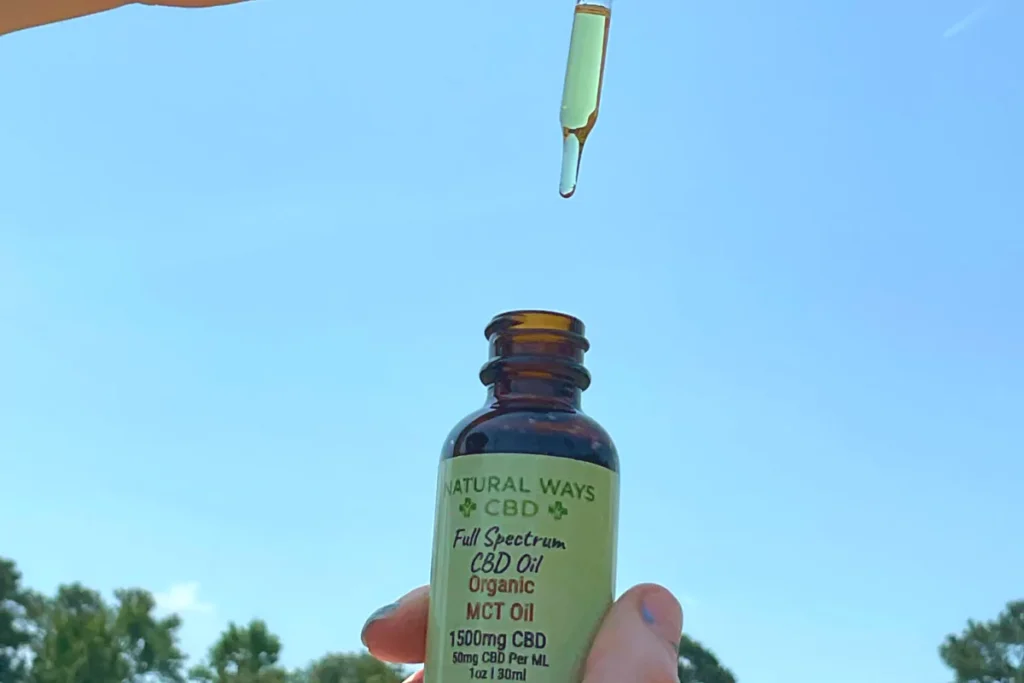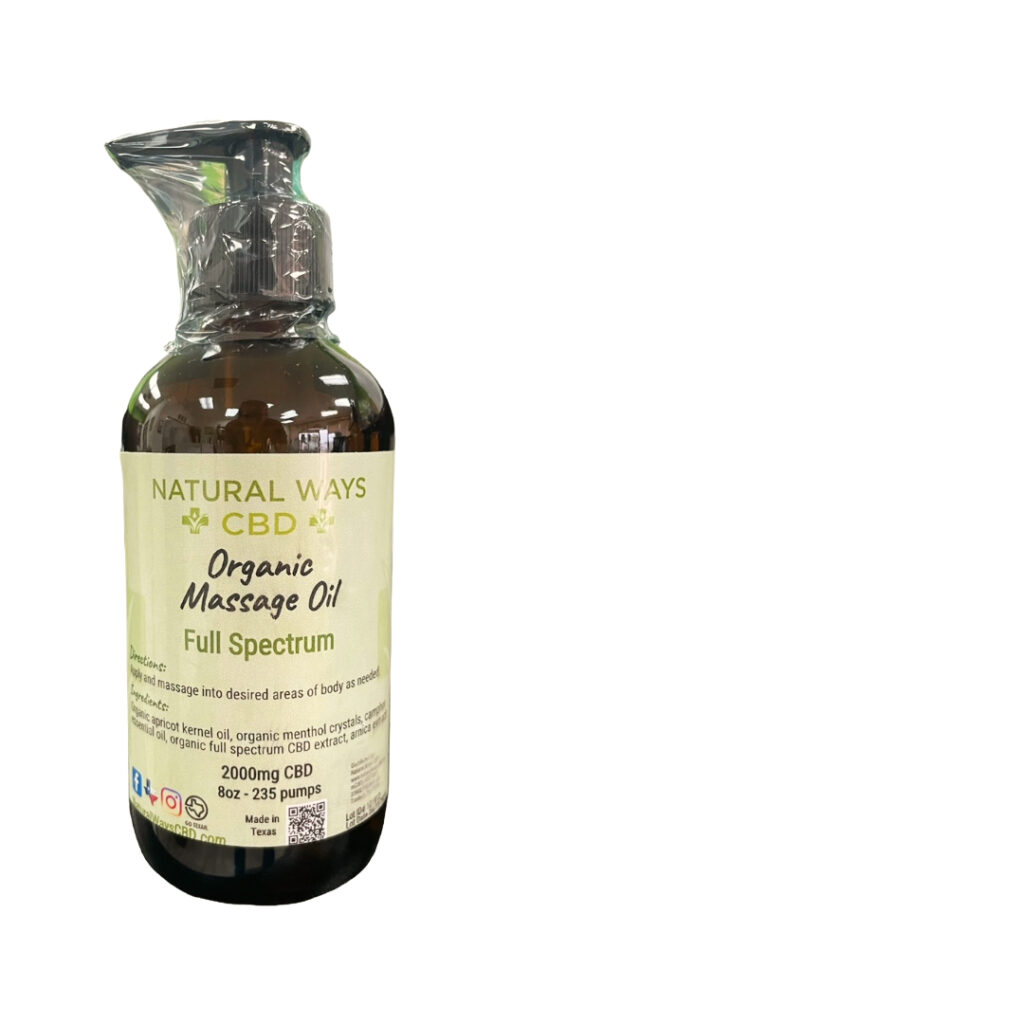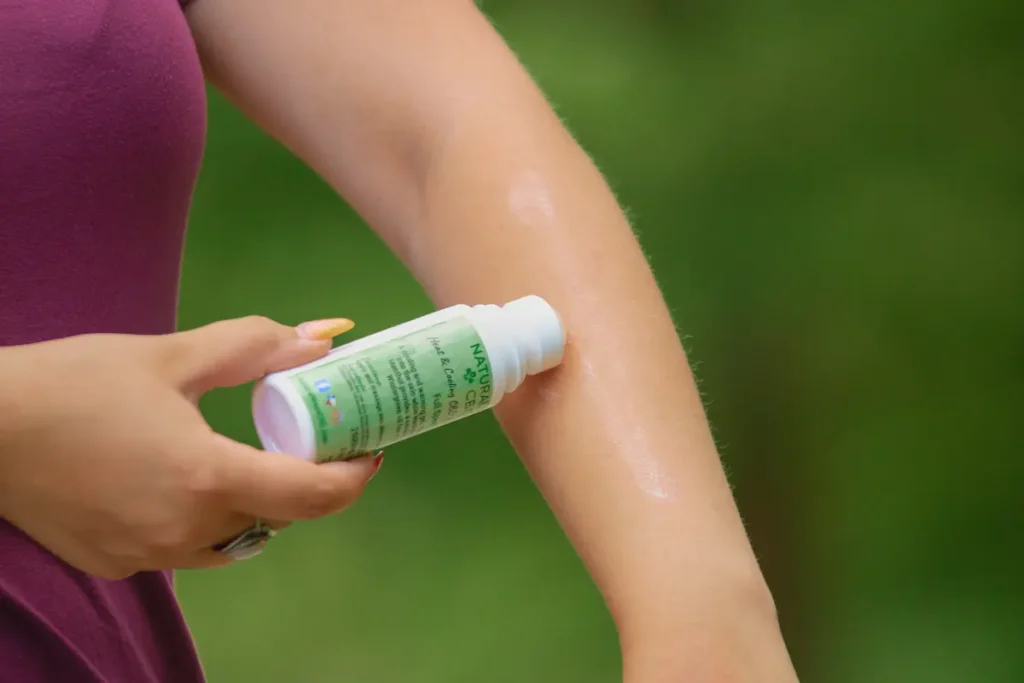Bursitis can be very painful, and managing it often requires the use of pharmaceutical drugs. But is there a natural alternative?
Maybe. Hemp-derived CBD (cannabidiol) may render benefits for people with bursitis by promoting a relaxed, pain-free body. CBD isn’t a substitute for medications, and it’s not a proven treatment. But it is a natural supplement that can promote wellness without significant side effects.
In this article, we’ll dive deeper into the potential benefits of CBD for bursitis and discuss how to use it to see the best results.
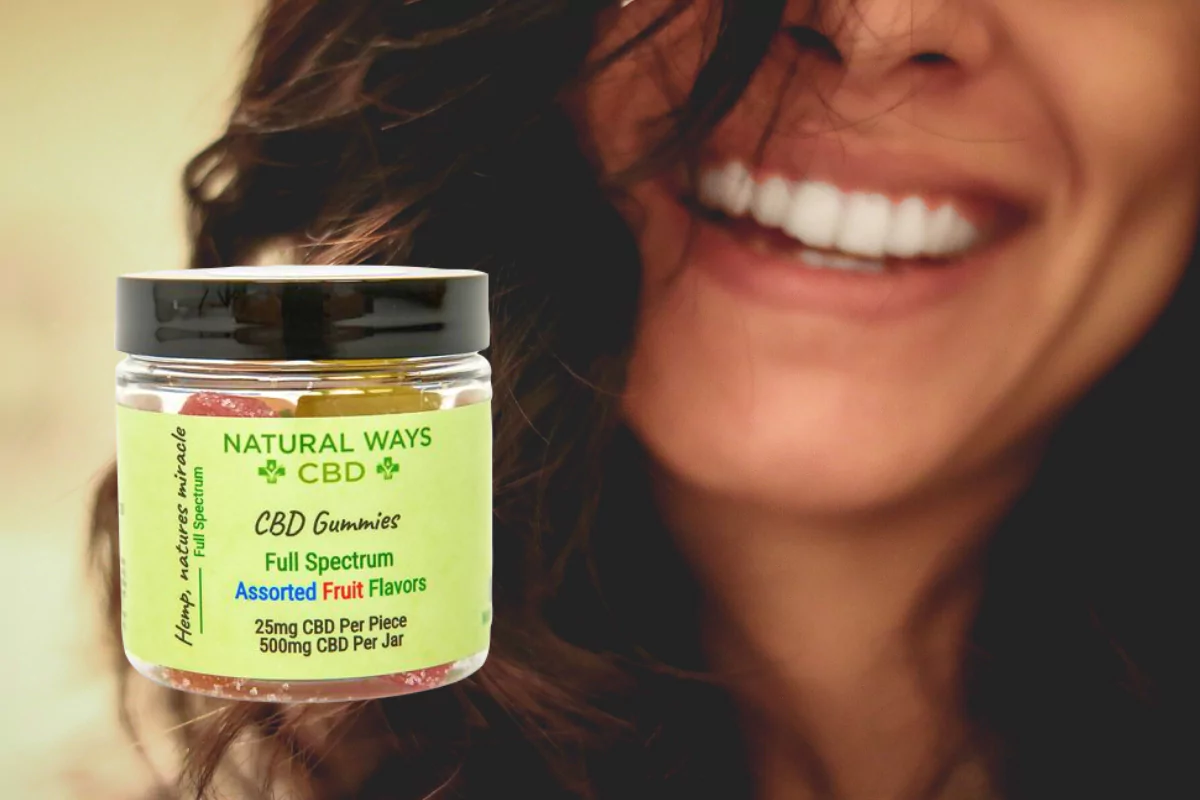
What is Bursitis?
Bursitis is a painful condition that affects the small, fluid-filled sacs — called bursae — that cushion the bones, tendons, and muscles near your joints. It happens when the bursae become inflamed.
Bursitis most commonly occurs in the hips, shoulders, and elbows, but it can also happen in the knees, heals, and base of your big toes.
The most common causes of bursitis are repetitive motions or positions that put pressure on the bursae around a joint, such as lifting something over your head repeatedly.
Symptoms of bursitis in an affected joint include:
- Feelings of achiness or stiffness
- An increase in pain when moved or pressed
- Swelling or redness
Bursitis treatment usually involves resting the affected joint and preventing further irritation.
In most cases, the pain will go away in a few weeks with proper treatment, however, recurrent recurrent flare-ups of bursitis are common.
What is CBD?
Cannabidiol (CBD) is a naturally-occurring cannabinoid in the cannabis sativa plant (hemp is cannabis sativa that contains less than 0.3% THC by dry weight).
There are more than 100 cannabinoids in hemp, but CBD is one of the most commonly-used because of its high abundance and potential therapeutic uses. It’s been researched for pain and inflammation, as well as for anxiety, insomnia, and epilepsy.
Unlike THC, CBD is not inebriating. It is technically psychoactive, in that it affects the mind, but it tends to create mild feelings of calm and relaxation, rather than the sensations you’d normally associate with a high.
Can CBD Help With Bursitis?
There isn’t any research specifically looking at the use of CBD for bursitis, so we can’t say for sure what effect it has on this condition.
However, research on CBD for joint pain, and pain in general, suggests CBD may have anti-inflammatory and analgesic (pain-reducing) properties. This means CBD may have benefits for people dealing with pain related to bursitis.
Research on CBD for joint pain
Research on CBD for joint pain is mixed. Some studies suggest it may help, while others find that it does little.
A questionnaire study of 428 people with arthritis found that CBD use was associated with improvements in pain (83%), physical function (66%), and sleep quality (66%).
Additionally, 60.5% of respondents reported a reduction or cessation in their use of other medications after they began taking CBD [1].
However, another study, which looked at the prevalence of CBD use among patients of hip and knee osteoarthritis, found that CBD didn’t render significant benefits.
The participants who used CBD experienced no significant perceived benefit as compared to those who didn’t [2].
The benefits of topical CBD have also been researched. A 2015 study found that transdermal CBD gel may reduce joint swelling [3].
Research on CBD for pain and inflammation
Several studies suggest CBD may be beneficial for pain and inflammation.
One example is a 2021 study in which scientists surveyed 253 CBD users to better understand how effective this natural supplement is for pain. Overall, results were positive: participants reported that CBD helped their pain (59.0%) and allowed them to reduce their pain medications (67.6%) [4].
A summary of the research
There isn’t any research on how CBD affects inflammation in the bursae, and it’s still not a proven treatment for pain, despite the studies.
However, the studies we have so far suggest CBD has beneficial physical properties, so it may be a beneficial supplement if you’re dealing with bursitis.
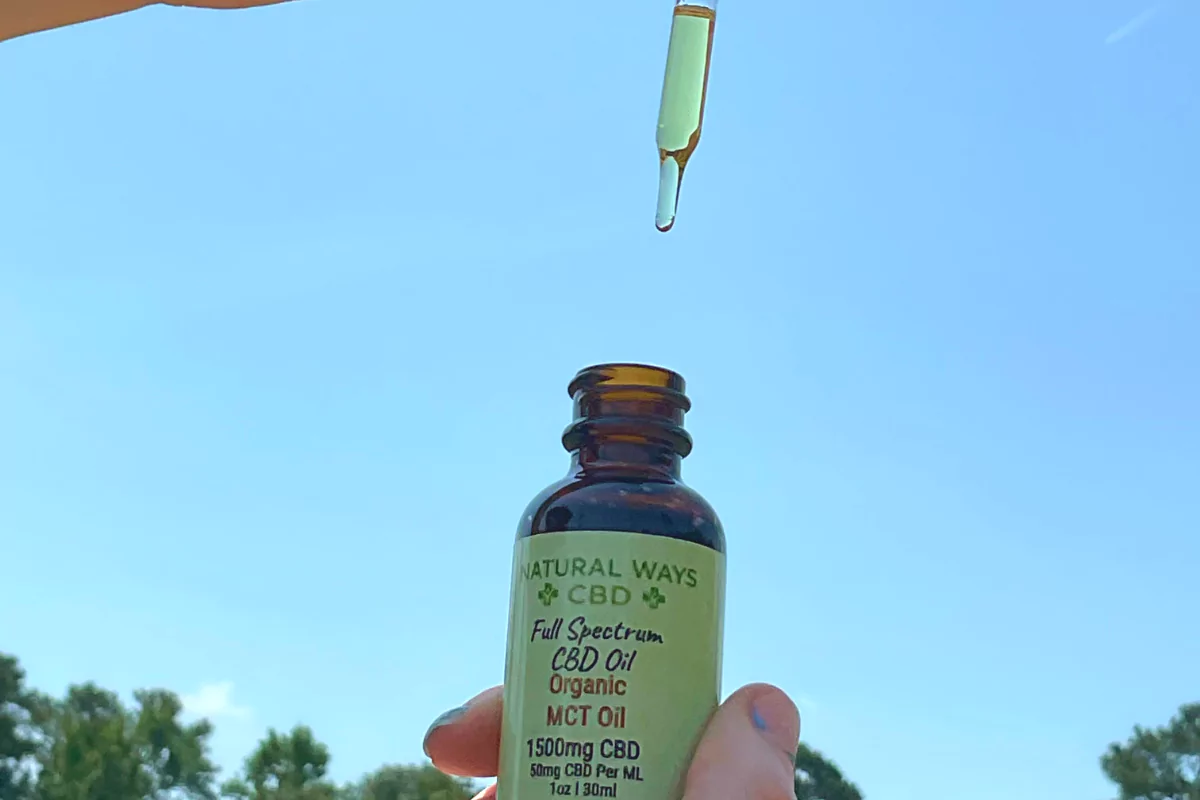
How Does CBD Work in The Body?
CBD works by supporting your endocannabinoid system (ECS). The ECS is a receptor system in your body that’s responsible for regulating your vital functions, including your inflammatory and pain responses.
The two main types of receptors in your ECS that cannabinoids interact with are the CB1 and CB2 receptors.
CB1 receptors produce mental effects when activated, while CB2 receptors produce physical effects upon activation.
Cannabinoids like THC tend to work mostly with the CB1 receptors, while CBG (cannabigerol) and CBN (cannabinol) may activate both CB1 and CB2 receptors.
CBD, however, doesn’t interact heavily with either type of receptor. Instead, research suggests that it may work by preventing the breakdown of your endocannabinoids (internal cannabinoids).
This allows it to support the overall function of your ECS, which is to keep your mind and body in a state of balance [5].
CBD may also impact serotonin transmission. Serotonin is a neurotransmitter that influences the pain sensation; low serotonin levels are associated with chronic pain.
CBD may improve how serotonin is transmitted within the brain, thereby promoting physical balance [6].
CBD for Bursitis: Side Effects & Safety Considerations
CBD is generally considered safe and well-tolerated, even when taken regularly and in large doses.
However, CBD has the potential to cause the following side effects:
- Dry mouth
- Drowsiness
- Diarrhea
- Reduced appetite
- Fatigue
Most people don’t feel the side effects, however, they are important to be aware of.
Which Type of CBD Product is Best for Bursitis?
There are several different types of CBD products, and none of them are necessarily superior when it comes to bursitis. Ultimately, it comes down to your situation and preferences:
- Oil – CBD oil consists of hemp extract and carrier oil. Because it can be put under the tongue, then swallowed, it starts working in just 10-15 minutes and is slightly more potent than other delivery methods.
- Gummies – CBD gummies are a good option if you’ll be taking the same dose of CBD on a regular basis. Gummies take 45 minutes to 1 hour to kick in.
- Softgels/Capsules – CBD softgels and capsules offer a cleaner, quicker alternative to gummies. However, capsules can’t be split like gummies can.
- Topicals – CBD topicals are applied to the skin, rather than taken orally and swallowed. In the context of bursitis, topicals are a beneficial CBD delivery method because you can apply them directly to the affected joint(s).
- Flower/Vapes – CBD hemp flower and CBD vapes are two other ways you can consume CBD for bursitis. However, they pose two downsides: first, the obvious health risk of inhaling smoke or vapor, and second, the difficulty of getting a precise dose.
Topical vs. Oral CBD for Bursitis: Which is Better?
When it comes to bursitis and other situations in which you experience discomfort in a specific body part, people often ask us whether they should use a CBD topical or an oral CBD product.
The answer for you will depend on where you need CBD to work.
Oral products work by delivering CBD to your bloodstream, which then circulates it throughout your body.
Topical products work by delivering CBD to the endocannabinoid receptors just beneath the area of skin where you apply them.
If you’re targeting a specific affected area and don’t need the mental effects of CBD and the all-over physical benefits, a CBD topical is the better choice.
But if you do want the full-body benefits, opt for CBD oil or CBD gummies.
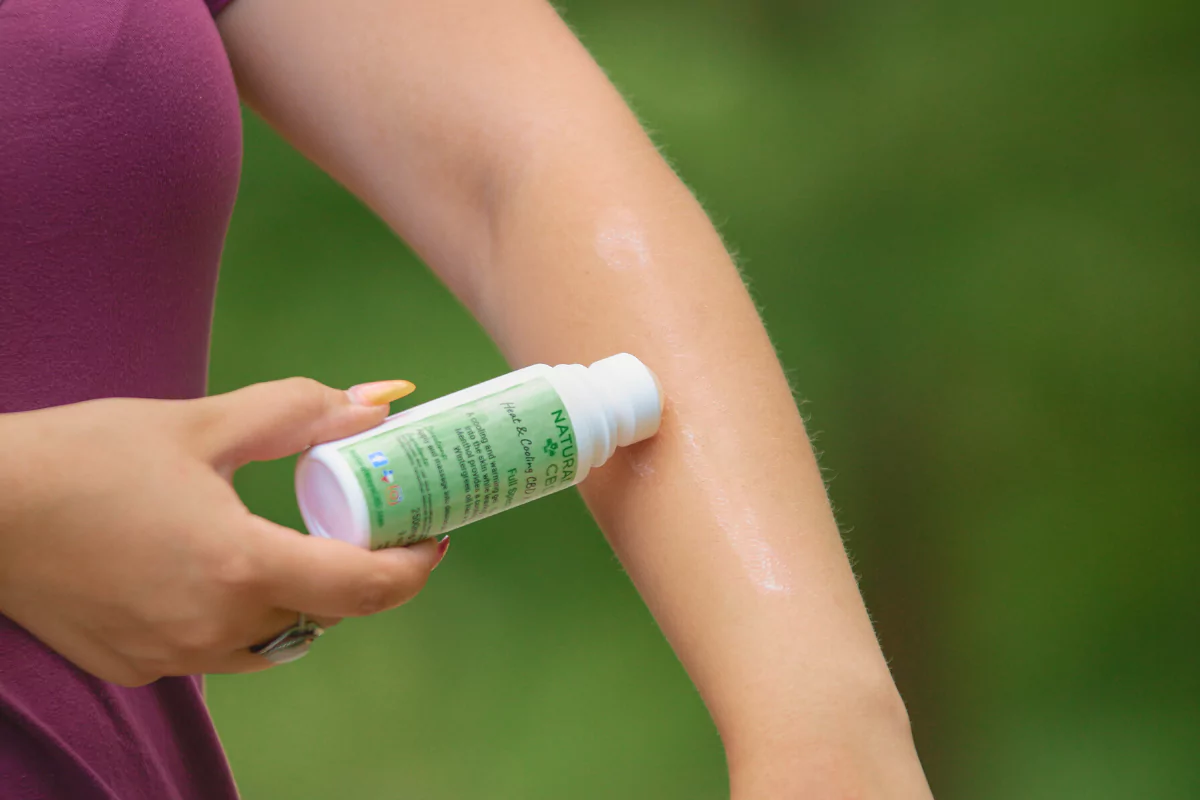
CBD Dosage for Bursitis
Starting out, we recommend taking a medium-strength dose of CBD for bursitis.
You can use the following CBD dosage formula:
(0.3) x (your body weight in lbs.) = your daily CBD dosage in mg. for bursitis.
As you go, gradually increase your daily CBD dosage depending on how it’s working for you.
You’ll need to take CBD consistently for at least 2 weeks in order to begin seeing benefits, because it will need to build up in your body to have its full effects. Unlike THC, CBD does not typically have a considerable effect on the first dose.
Note that if you’re using a CBD topical, these dosing guidelines don’t necessarily apply. Instead, follow the product’s specific directions and experiment with the amount you use each time.
What to Look For When Shopping CBD For Bursitis
The CBD industry is largely unregulated, and therefore, there’s a big problem with low-quality products.
A 2020 study found that 26% of CBD products contain significantly less CBD than was stated on the label [7].
Because of this, you’ll need to employ careful shopping techniques in order to find a high-quality CBD product that will actually help you:
Check lab tests
Only buy CBD products that have a certificate of analysis (COA) from a 3rd-party lab.
Reputable companies have their products tested to verify potency, safety, and authenticity; check the following when examining a lab report:
- Cannabinoid profile: Ensure that the cannabinoids stated in the lab report are the cannabinoids the product is supposed to contain, according to its label.
- Potency: Check the amount of each cannabinoid listed in the lab report to ensure it matches what’s listed on the product’s label.
- Contaminants: Make sure the product passes the tests for heavy metals, pesticides, and mold.
Read ingredients
Make sure the ingredients list for the product you’re interested in specifically says cannabidiol.
Just because it says hempseed oil or cannabis sativa oil doesn’t necessarily mean it contains CBD.
Make sure it’s responsibly sourced
Buy products that are made by reputable companies from organic hemp grown in the US.
Because US hemp is subject to regulation, it won’t contain more than 0.3% THC by law, so you can assume with high confidence that you’re getting a safe, legal product.
Conclusion: Is CBD Beneficial for Bursitis?
Since CBD hasn’t been researched specifically for bursitis, at this point, it’s hard to say to what degree it may help with this painful condition.
However, research shows CBD has beneficial effects for pain and inflammation, so it’s likely that it may render some physical benefit for people with bursitis.
Right now, we recommend using CBD as a supplement to, rather than a replacement for, traditional treatment methods. And if you’re receiving medical treatment for bursitis, be sure to consult your doctor beforehand to ensure CBD is the right choice for your situation.
CBD for Bursitis: Frequently Asked Questions
Here are some questions our customers frequently ask us about CBD for bursitis.
Will CBD help hip bursitis?
CBD hasn’t been researched for bursitis, however, CBD may have anti-inflammatory and analgesic properties. Many people use CBD for hip-related discomfort.
What is the best anti-inflammatory for bursitis?
Over-the-counter non-steroidal anti-inflammatory drugs (NSAIDs) such as ibuprofen and naproxen are commonly recommended for bursitis.
What is the best natural treatment for bursitis?
Typically, the best natural way to treat bursitis is to avoid activities that may irritate the joints, as well as to apply ice packs and dry heat (such as from a heating pad). CBD is a natural supplement that may also help.
Does CBD reduce inflammation or just pain?
Research suggests CBD has both anti-inflammatory and analgesic (pain-reducing) effects. However, more studies are needed to determine how reliable it is, and CBD is not an FDA-approved treatment.
Sources
[1] Frane, Nicholas et al. “Cannabidiol as a treatment for arthritis and joint pain: an exploratory cross-sectional study.” Journal of cannabis research vol. 4,1 47. 24 Aug. 2022, doi:10.1186/s42238-022-00154-9
[2] Deckey, David G et al. “Prevalence of Cannabinoid Use in Patients With Hip and Knee Osteoarthritis.” Journal of the American Academy of Orthopaedic Surgeons. Global research & reviews vol. 5,2 e20.00172. 2 Feb. 2021, doi:10.5435/JAAOSGlobal-D-20-00172
[3] Hammell, D C et al. “Transdermal cannabidiol reduces inflammation and pain-related behaviours in a rat model of arthritis.” European journal of pain (London, England) vol. 20,6 (2016): 936-48. doi:10.1002/ejp.818
[4] Schilling, Jan M et al. “Cannabidiol as a Treatment for Chronic Pain: A Survey of Patients’ Perspectives and Attitudes.” Journal of pain research vol. 14 1241-1250. 5 May. 2021, doi:10.2147/JPR.S278718
[5] Chye, Yann et al. “The Endocannabinoid System and Cannabidiol’s Promise for the Treatment of Substance Use Disorder.” Frontiers in psychiatry vol. 10 63. 19 Feb. 2019, doi:10.3389/fpsyt.2019.00063
[6] De Gregorio, Danilo et al. “Cannabidiol modulates serotonergic transmission and reverses both allodynia and anxiety-like behavior in a model of neuropathic pain.” Pain vol. 160,1 (2019): 136-150. doi:10.1097/j.pain.0000000000001386
[7] Evans, David G. “Medical Fraud, Mislabeling, Contamination: All Common in CBD Products.” Missouri medicine vol. 117,5 (2020): 394-399.

